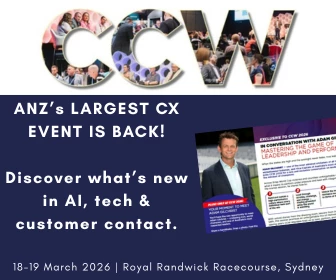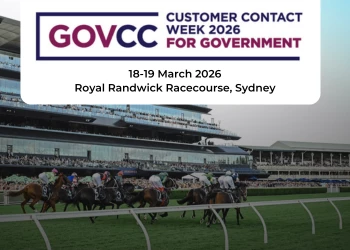Advertising and Social Media Marketing in the Age of Customer Centricity
In an era of short attention spans and fragmented channels, how do you connect with your customers?
Add bookmarkThere’s never been a tougher time to be an advertiser or marketer. Research shows that Millennials and Generation-Z exhibit the highest resistance to advertising.
They’ve installed ad blockers on their web browsers, cultivated “banner blindness” from seeing too many digital banner ads, and they’re adept at quickly scrolling past branded posts in their social media feed.
Where corporations once wooed entire households through TV ads, they now grapple with channel fragmentation. It increases the onus on brands to understand their customers, how to reach them and get their attention. Meanwhile, marketers have to be ultra-creative and find ways to surprise people, often using humor and irreverence.
One brand that took this in stride was, um, Kentucky Fried Chicken. Its “branded everything” campaign resulted in a mindblowing 1,850 pieces of content in 12 months, from attention-grabbing publicity stunts to weird and wacky merchandise like the Colonel Pillowcase, bucket hats and gravy-scented candles to Finger Lickin’ Good edible nail polish designed to taste like chicken using spices from McCormick.
(Image credit: KFC)
Or the time they hosted a four-hour livestream on Facebook of cats playing on a cat climber contraption in the shape of Colonel Sanders. Yeah, KFC actually played the cute cat trump card.
“They’ve written comic books and romance novels and had almost a dozen celebrities play the role of Colonel Sanders in their advertising. It was this onslaught of the unexpected,” said Anita Schillhorn Van Veen, planning director at TBWA\Chiat\Day.
In our online event in September, ‘Trends in CX Design & Strategy,’ I hosted a session with Van Veen on marketing and advertising in the age of customer centricity, where we discussed ways brands can connect with customers in today’s media landscape. (Join us for our next online event here!)
Van Veen compares KFC’s innovative, tongue-in-cheek tactics to that of Grammy-winning pop superstar Beyoncé - queen of the Beyhive and the unprecendented. The singer forever changed the way artists release albums with the 2013 launch of her self-titled visual album, which she dropped on a random Friday in December with no prior publicity.
But sometimes brands go too far in their bids to appear edgy and accessible, and their tactlessness lands them in hot water.
“Most of the backlash today comes from ads that are tone-deaf to the zeitgeist, being accidentally abrasive, like Heineken’s ‘Lighter is Better’ campaign or the Dodge brand appropriating a Martin Luther King speech to sell trucks,” said Van Veen, who has over a decade of experience working with agencies and companies to find marketing solutions to business problems.
In our online event session, Van Veen and I sought to debunk three major marketing clichés.
Marketing cliché #1: Brands should become storytellers
“Become a storyteller” – it’s a one-size-fits-all commandment imposed on all and sundry, even the rural mom-and-pop selling outdoor power tools. While rural consumers of outdoor power tools probably don’t spend a lot of time on social media, every brand has an origin story, Van Veen points out.
It’s easy to forget that Fortune 100s don’t spring up overnight as fully-formed corporate monoliths; the founders launched the business with a vision of how they might change the world – or at least make life a little easier for their target customer.
Join us at our next Online Event: Contact Center 2025 - A Roadmap
“Storytelling is an innate human need,” says Van Veen. “We live on stories – from ancient myths to bible stories to premium television.”
If you’re having trouble making the origin story relevant to a modern audience or find rehashing the past irrelevant, the next entry point is your organization’s mission and vision statement. They’re meant to be aspirational, lofty, and even a little bit unrealistic, which gives you more latitude with the types of stories you can tell.
Marketing cliché #2: Support social causes your customers care about
We’re told that consumers – especially the rarefied Millennial species – buy from brands whose values gel with their own personal values. That’s how you end up with blundering mishaps like Burger King selling Unhappy Meals to raise awareness about mental health – making consumers piggy-in-the-middle in its never-ending war against McDonald’s.
British department store Marks & Spencer was derided for its rainbow sandwich launched during LGBT Pride Month this year. The most high-profile “woke-washing” goof-up, however, came from Pepsi, whose ad featuring Kendall Jenner co-opted imagery of the Black Lives Matter protest against police violence in the US, which could purportedly be resolved by offering a police officer a can of soda.
Read more: Corporate Greenwashing is an Even Worse Problem Given Climate Change
Greenwashing, pinkwashing, woke-washing – brands have been accused of jumping on buzzy social justice issues just to profit off a viral hashtag or appear in the media. Van Veen says brands should do their due diligence before supporting a cause to make sure it doesn’t ring hollow. In fact, it’s a time for brands to engage in some much-needed self-reflection by asking questions such as the following:
- Does it match your company’s values?
- Are you doing internally what you’re promoting externally?
Audi initially won praise for its 2017 Super Bowl ad backing equal pay, until a backlash revealed that just two of the companies 14 executives were women.
Marketing cliché #3: Experiential marketing is the best way to engage with your consumers
Pop-up shops, head-turning art installations and giant floats are all the rage. Used wisely, experiential marketing can yield a high return-on-investment. Again, the “experience” you seek to create needs to be brand-appropriate, and should also leverage storytelling before, during and after deployment.
“What [experiential marketing] really does is reframe in people’s minds what a brand can offer them,” says Van Veen, who goes on to reference the hotel and resort Taco Bell just opened in Palm Springs, CA, where guests stay in rooms decorated with Taco Bell artwork, eat Taco Bell meals and float in the pool on giant Taco Bell sauce packet rafts.
Read more: Brands as Storytellers - Analyzing the Content Strategy of Starbucks, WeWork and More
In addition to engaging customers on-site while the installation runs, it’s important to drum up PR and social media clout from it, too. Hire influencers, make sure your internal team is posting photos, videos and GIFs while using all relevant tags and hashtags. Capture metrics on data and traffic so you can continue to leverage the installation even after it’s taken down.
“Rather than saying, okay, we’re going to build this experience and people will come and take pictures and then they’ll go home, you want to make sure every experiential campaign rolls out of that central understanding of who your brand is, who your consumers are, and what is meaningful in culture today.”
For Taco Bell, the real story was that its hotel rooms sold out in two minutes after its grand opening on August 8, 2019, says Van Veen.
“That was the most important piece of data that continued to create buzz and desire to experience this funny thing.”























